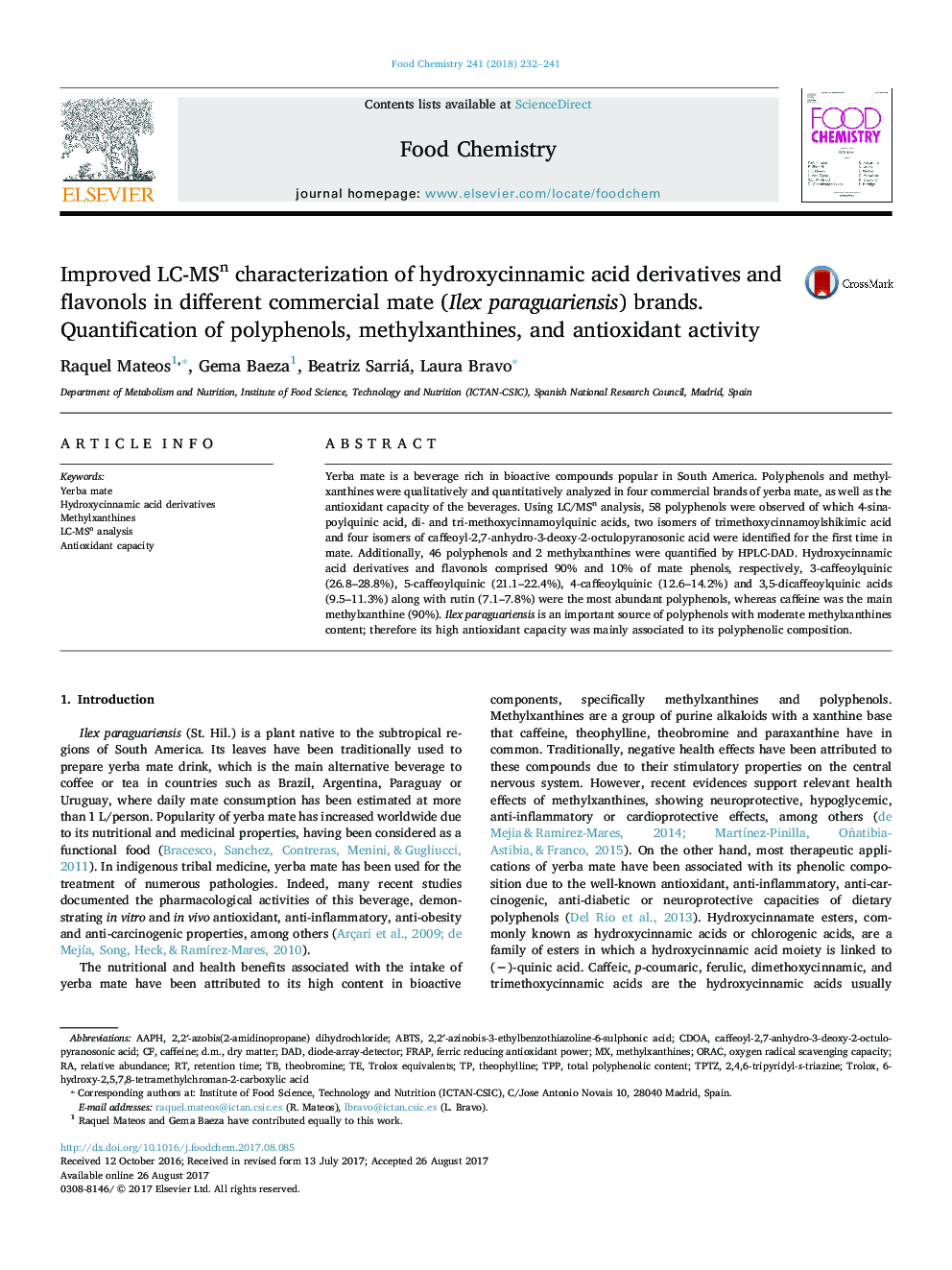| Article ID | Journal | Published Year | Pages | File Type |
|---|---|---|---|---|
| 5133066 | Food Chemistry | 2018 | 10 Pages |
Abstract
Yerba mate is a beverage rich in bioactive compounds popular in South America. Polyphenols and methylxanthines were qualitatively and quantitatively analyzed in four commercial brands of yerba mate, as well as the antioxidant capacity of the beverages. Using LC/MSn analysis, 58 polyphenols were observed of which 4-sinapoylquinic acid, di- and tri-methoxycinnamoylquinic acids, two isomers of trimethoxycinnamoylshikimic acid and four isomers of caffeoyl-2,7-anhydro-3-deoxy-2-octulopyranosonic acid were identified for the first time in mate. Additionally, 46 polyphenols and 2 methylxanthines were quantified by HPLC-DAD. Hydroxycinnamic acid derivatives and flavonols comprised 90% and 10% of mate phenols, respectively, 3-caffeoylquinic (26.8-28.8%), 5-caffeoylquinic (21.1-22.4%), 4-caffeoylquinic (12.6-14.2%) and 3,5-dicaffeoylquinic acids (9.5-11.3%) along with rutin (7.1-7.8%) were the most abundant polyphenols, whereas caffeine was the main methylxanthine (90%). Ilex paraguariensis is an important source of polyphenols with moderate methylxanthines content; therefore its high antioxidant capacity was mainly associated to its polyphenolic composition.
Keywords
DADd.m.TheobromineTPTZFRAPAAPHABTSORACTPP2,2′-azobis(2-amidinopropane) dihydrochloride2,4,6-tripyridyl-S-triazine6-hydroxy-2,5,7,8-tetramethylchroman-2-carboxylic acidtheophyllineTrolox EquivalentsTroloxRetention timeAntioxidant capacityRelative abundancedry matterMethylxanthinesTotal polyphenolic contentHydroxycinnamic acid derivativesYerba mateCaffeineferric reducing antioxidant power
Related Topics
Physical Sciences and Engineering
Chemistry
Analytical Chemistry
Authors
Raquel Mateos, Gema Baeza, Beatriz Sarriá, Laura Bravo,
